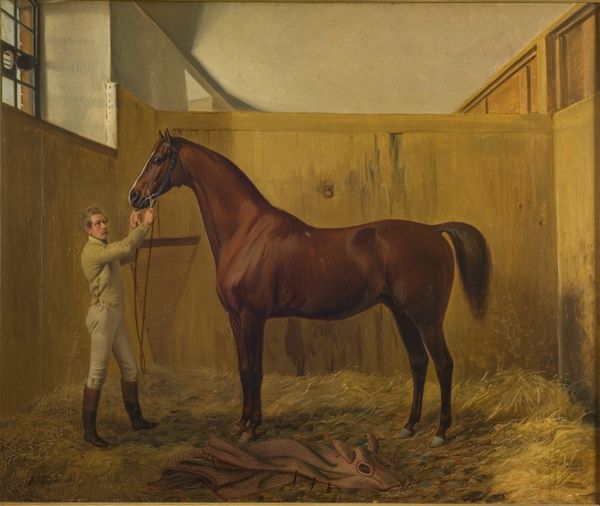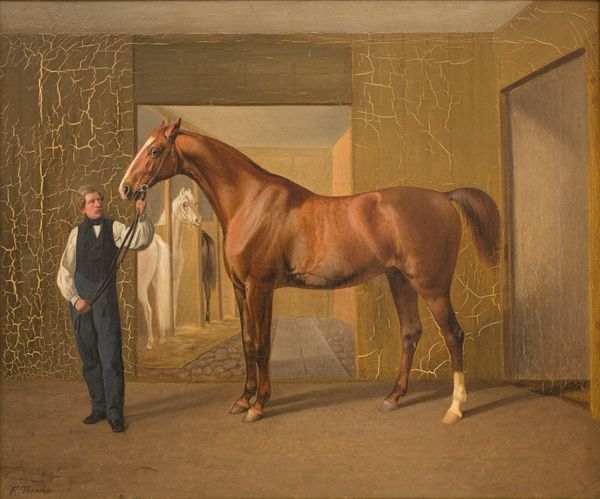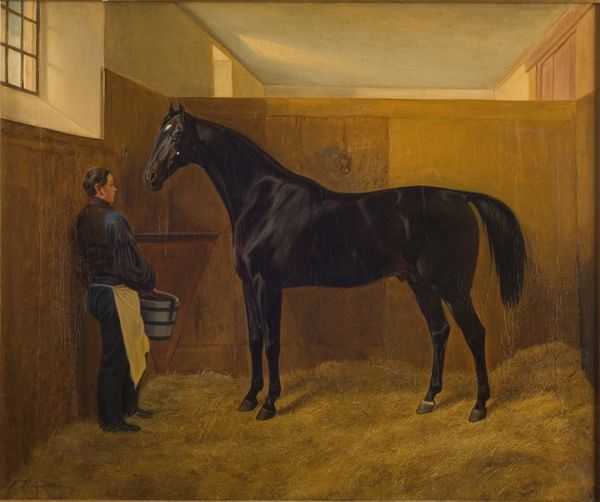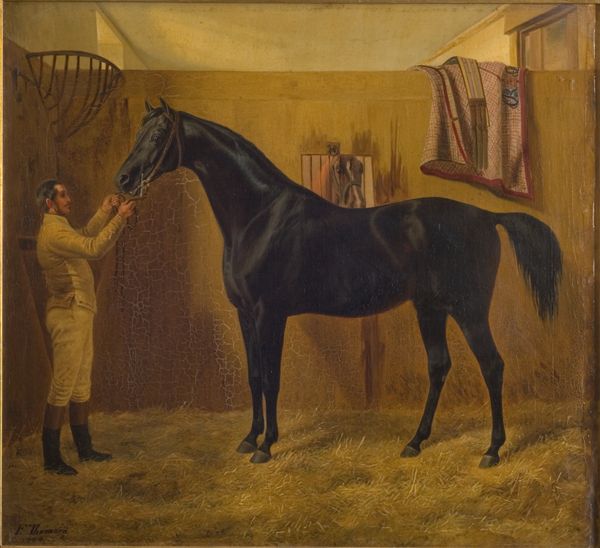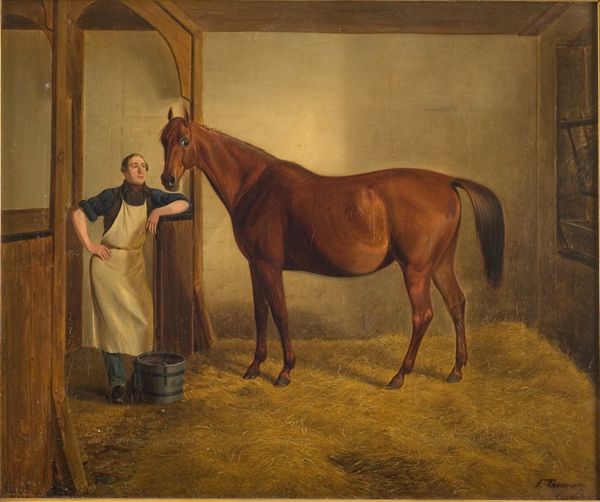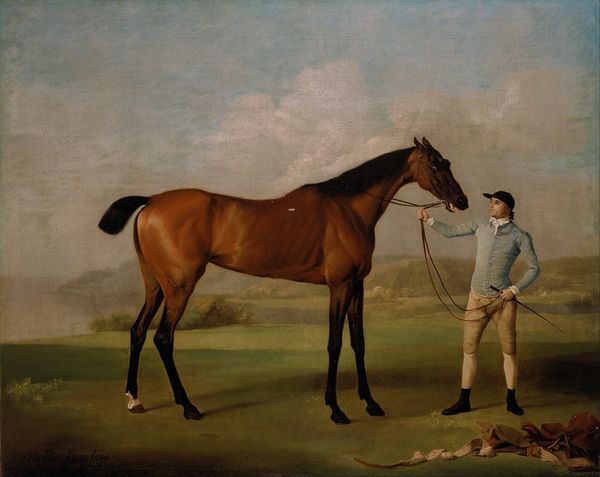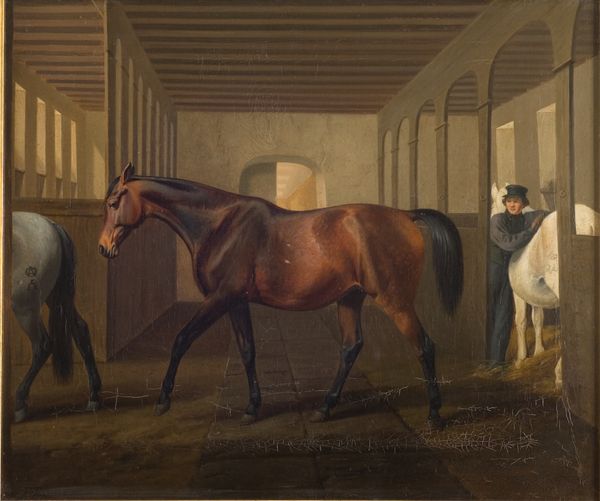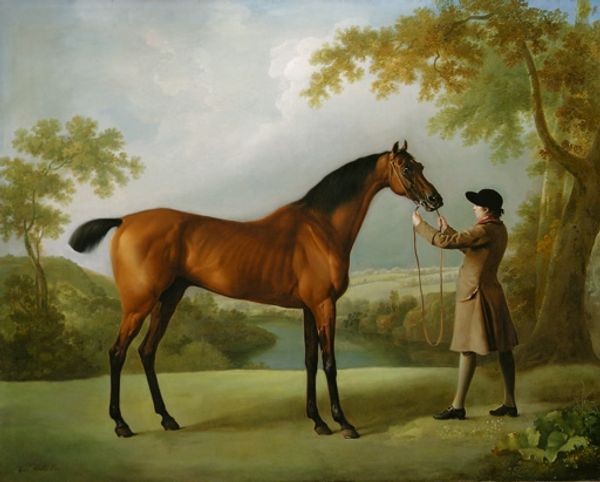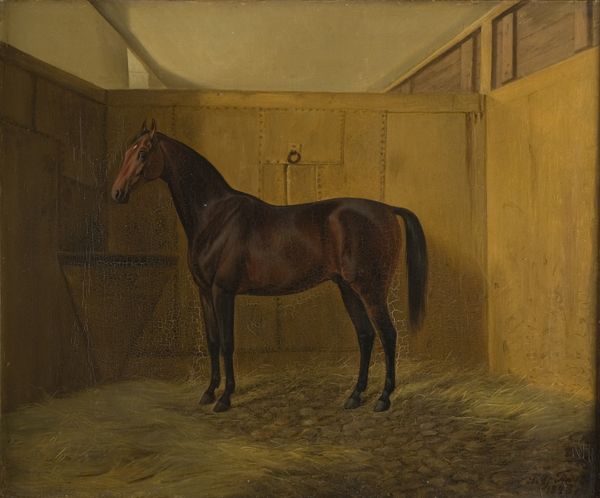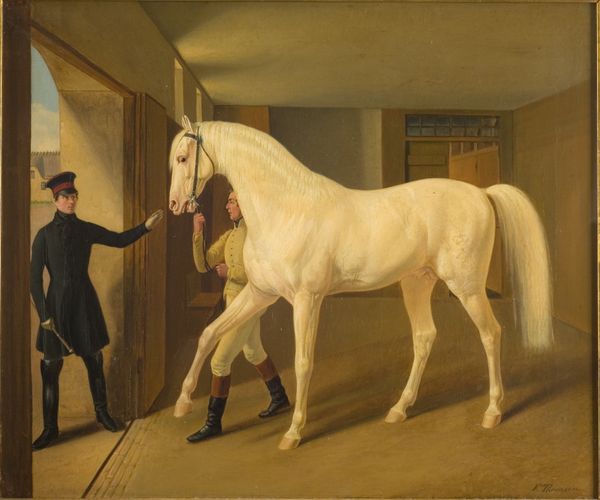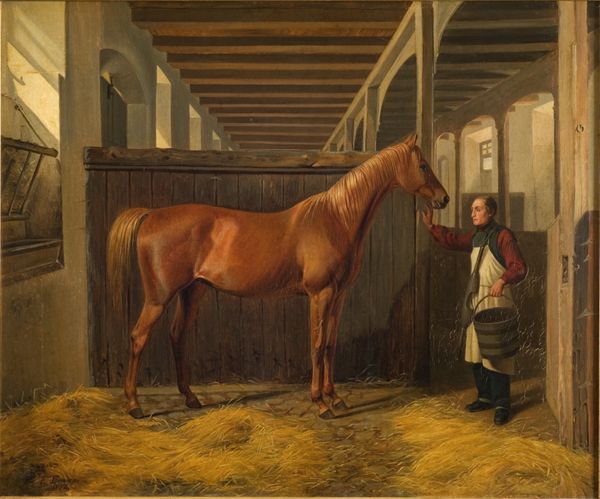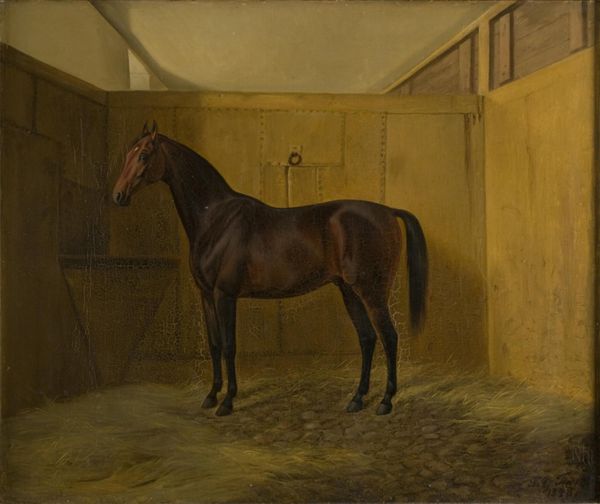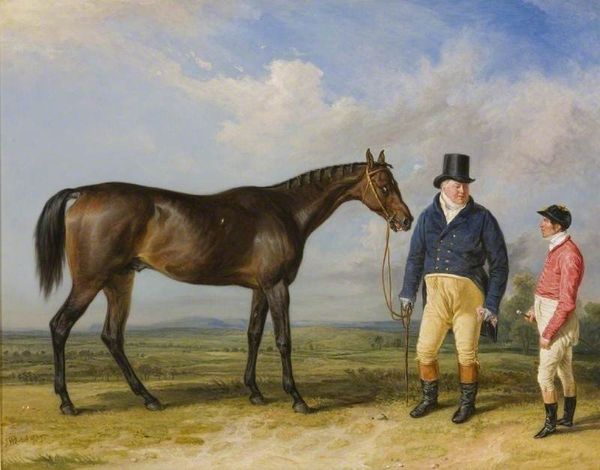
painting, canvas
#
portrait
#
gouache
#
painting
#
canvas
#
underpainting
#
painting painterly
#
genre-painting
#
history-painting
#
realism
Dimensions: 45 cm (height) x 55 cm (width) (Netto)
Curator: This is Fritz Thomsen's "Bacarolle," dating roughly from 1834 to 1872. It's currently held here at the SMK, the Statens Museum for Kunst. A painting on canvas... a relatively straightforward application, really. Editor: My first impression is…stately. There’s an almost uncanny balance between the animal subject and the two men. There's something decidedly social about it, about power, in the presence of those figures, both the living and the portrayed ones. Curator: Well, it does play with genre and history painting in an interesting way. One might consider the historical context of equestrian portraiture, typically reserved for the aristocracy, the landed gentry. Look at how carefully the light falls. One might ponder on the underpainting, for instance: the methods by which the painter attempts to achieve the glossiness on the horse’s coat. What pigments did he have available? What were his choices? Editor: Precisely, but I can’t help but wonder how this kind of composition both perpetuates and maybe, perhaps subverts, the dynamics of control. The horse as property, an asset to be displayed; and then we get the additional layers within the human relationship between the men and the horse. How do these layers of control speak to the class structures inherent in the artistic commissioning process? Curator: The gouache is quite visible; one can also imagine the workshop conditions. Did Thomsen, perhaps, train other artisans? How many versions or similar compositions came from his studio? These paintings, viewed through that lens, start to seem like mass-produced goods, which would surely be heretical to some scholars of aesthetics. The social aspects were not, indeed, relegated to merely what's in the artwork itself but inherent to its creation! Editor: It pushes me to think of who exactly the intended audience might have been, who held enough influence to dictate those standards of the time, and to reflect on our position as viewers complicit in consuming them today. Curator: Exactly, the work is a fine example of material limitations and possibilities shaping the artwork. Editor: Yes, I'm left considering how those dynamics continue to resonate and influence artistic expression. Curator: The canvas offers us just one tiny peek into its complex web of the process and reception. Editor: Indeed, something for our audiences to continue to chew on long after they've left the gallery.
Comments
No comments
Be the first to comment and join the conversation on the ultimate creative platform.
